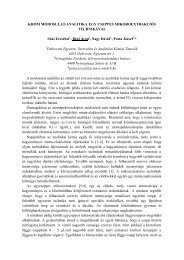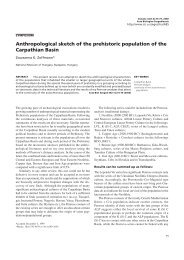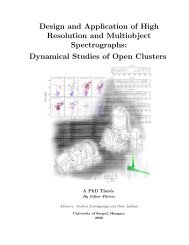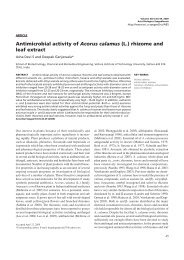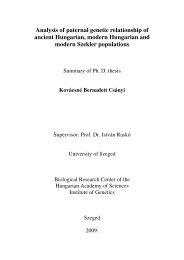principles of extraction and the extraction of semivolatile organics ...
principles of extraction and the extraction of semivolatile organics ...
principles of extraction and the extraction of semivolatile organics ...
You also want an ePaper? Increase the reach of your titles
YUMPU automatically turns print PDFs into web optimized ePapers that Google loves.
86 <strong>principles</strong> <strong>of</strong> <strong>extraction</strong><br />
S i l i c a<br />
sorbents available at <strong>the</strong> time. Reversed-phase bonded silica sorbents having<br />
alkyl groups covalently bonded to <strong>the</strong> silica gel backbone interact primarily<br />
with analytes via van der Waals forces (Figure 2.24).<br />
Bonded-phase sorbents are stable to aqueous solvents over a pH range <strong>of</strong><br />
1 to 8.5, above which <strong>the</strong> silica backbone itself begins to dissolve <strong>and</strong> below<br />
which <strong>the</strong> SiaC bond is attacked. Manufacturers have continued to extend<br />
<strong>the</strong>se ranges through improved products, <strong>and</strong> researchers have stretched<br />
<strong>the</strong> limits <strong>of</strong> <strong>the</strong>se restrictions. The development <strong>of</strong> bonded silica sorbents<br />
led to a proliferation <strong>of</strong> pharmaceutical <strong>and</strong> environmental applications for<br />
extracting <strong>semivolatile</strong> <strong>organics</strong> from aqueous solution.<br />
The bonded phases produced by manufacturers vary according to <strong>the</strong><br />
nature <strong>of</strong> <strong>the</strong> silica used to prepare <strong>the</strong> bonded phase <strong>and</strong> in <strong>the</strong> reactants<br />
<strong>and</strong> reaction conditions used. The variations are closely guarded, proprietary<br />
manufacturing processes. However, it is generally known that <strong>the</strong> most<br />
common commercially manufactured bonded-phase sorbents are based on<br />
chemical reaction between silica <strong>and</strong> organosilanes via <strong>the</strong> silanol groups on<br />
<strong>the</strong> silica surface to produce chemically stable SiaOaSiaC covalent linkages<br />
to <strong>the</strong> silica backbone [75,87]. Nonpolar, polar, or ionic bonded phases can<br />
be prepared by varying <strong>the</strong> nature <strong>of</strong> <strong>the</strong> organic moiety bonded to <strong>the</strong> silica<br />
surface.<br />
Bonded phases can be obtained as monomeric or polymeric coverage <strong>of</strong><br />
an organic lig<strong>and</strong> group, R, on <strong>the</strong> silica surface depending on whe<strong>the</strong>r a<br />
mon<strong>of</strong>unctional (R3SiX) or a trifunctional (RSiX3) reactant is used, respec-<br />
NH 2<br />
reversed-phase octadecyl (C 18 ) modified silica sorbent<br />
Figure 2.24. Interactions between analytes <strong>and</strong> nonpolar bonded silica sorbents via van der<br />
Waals forces.










